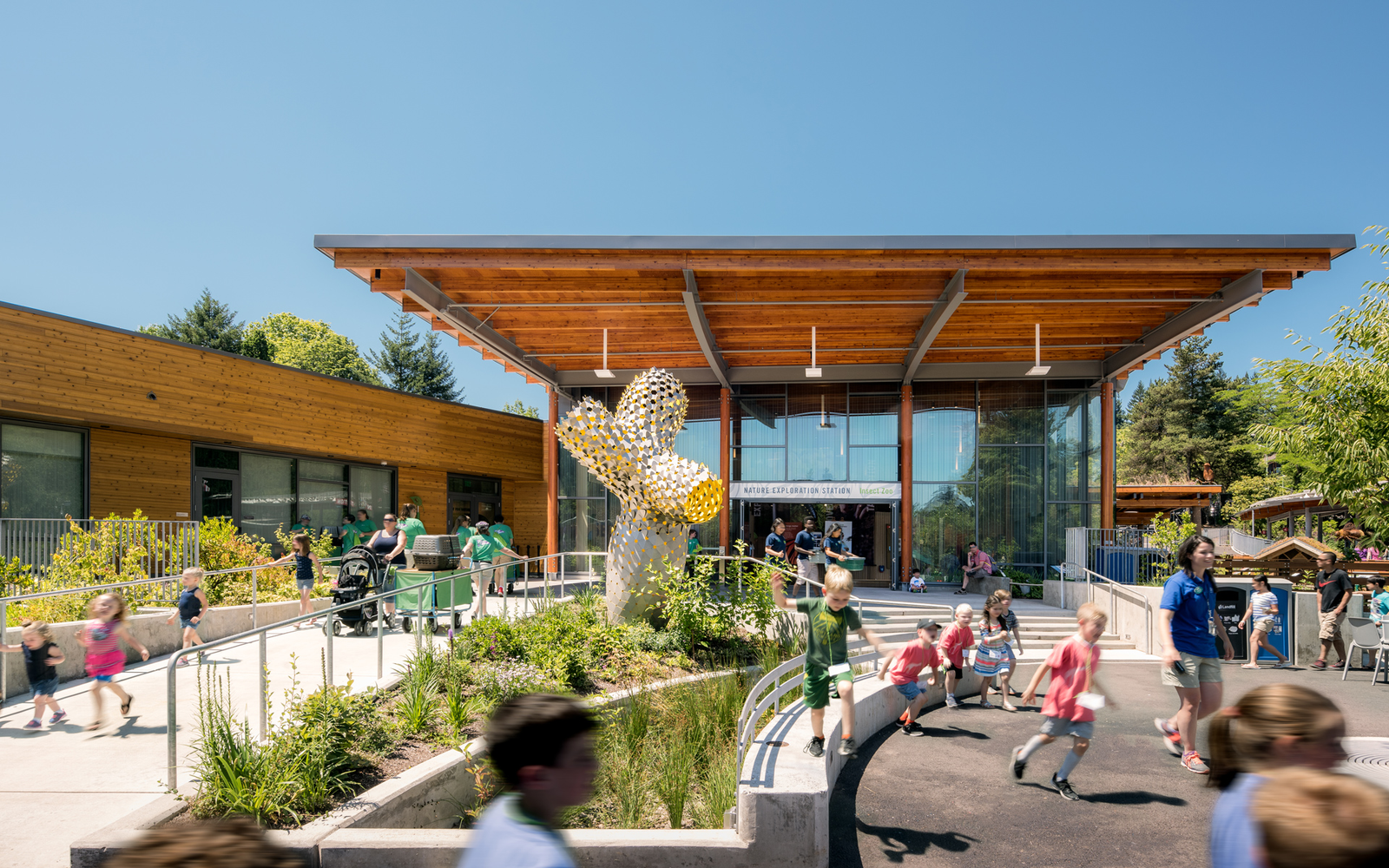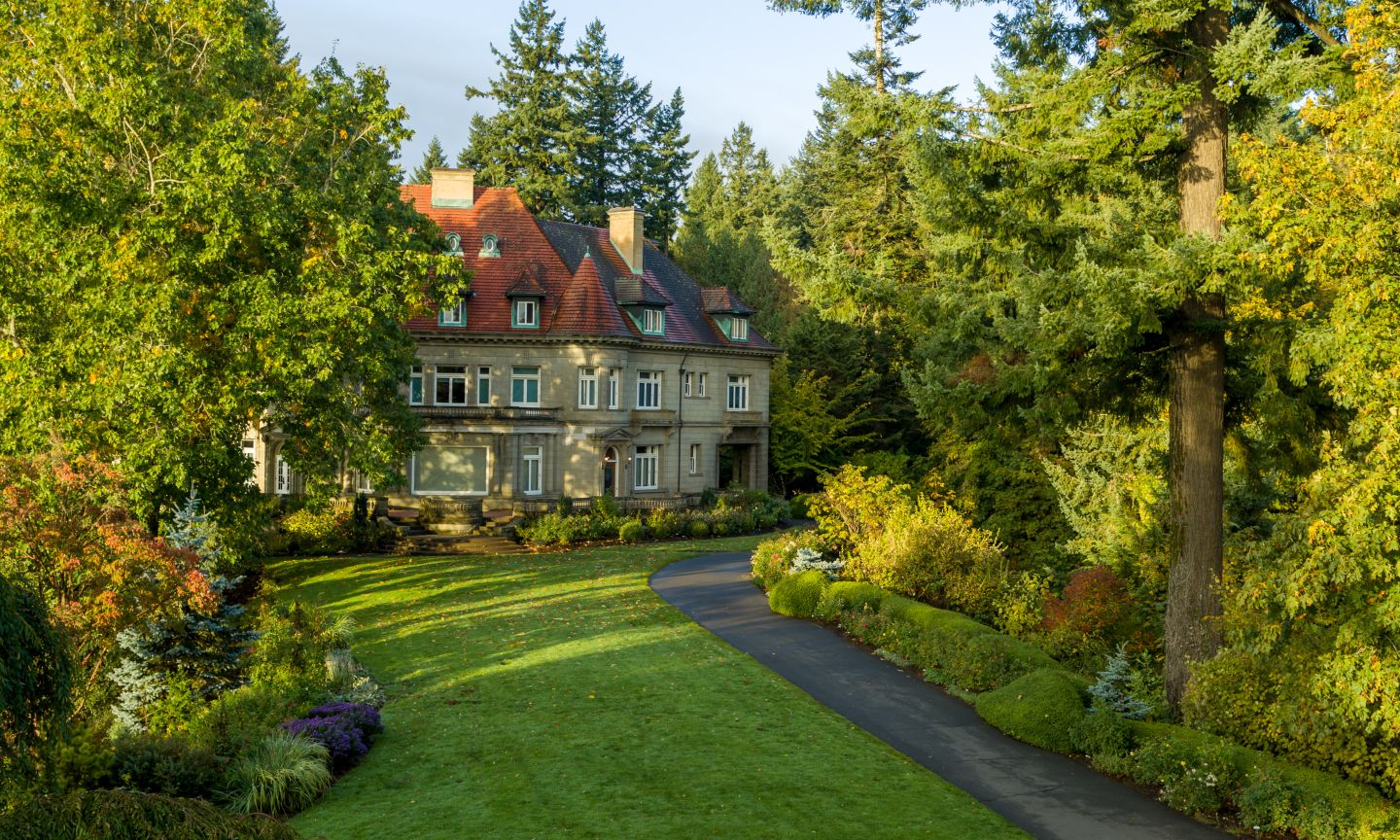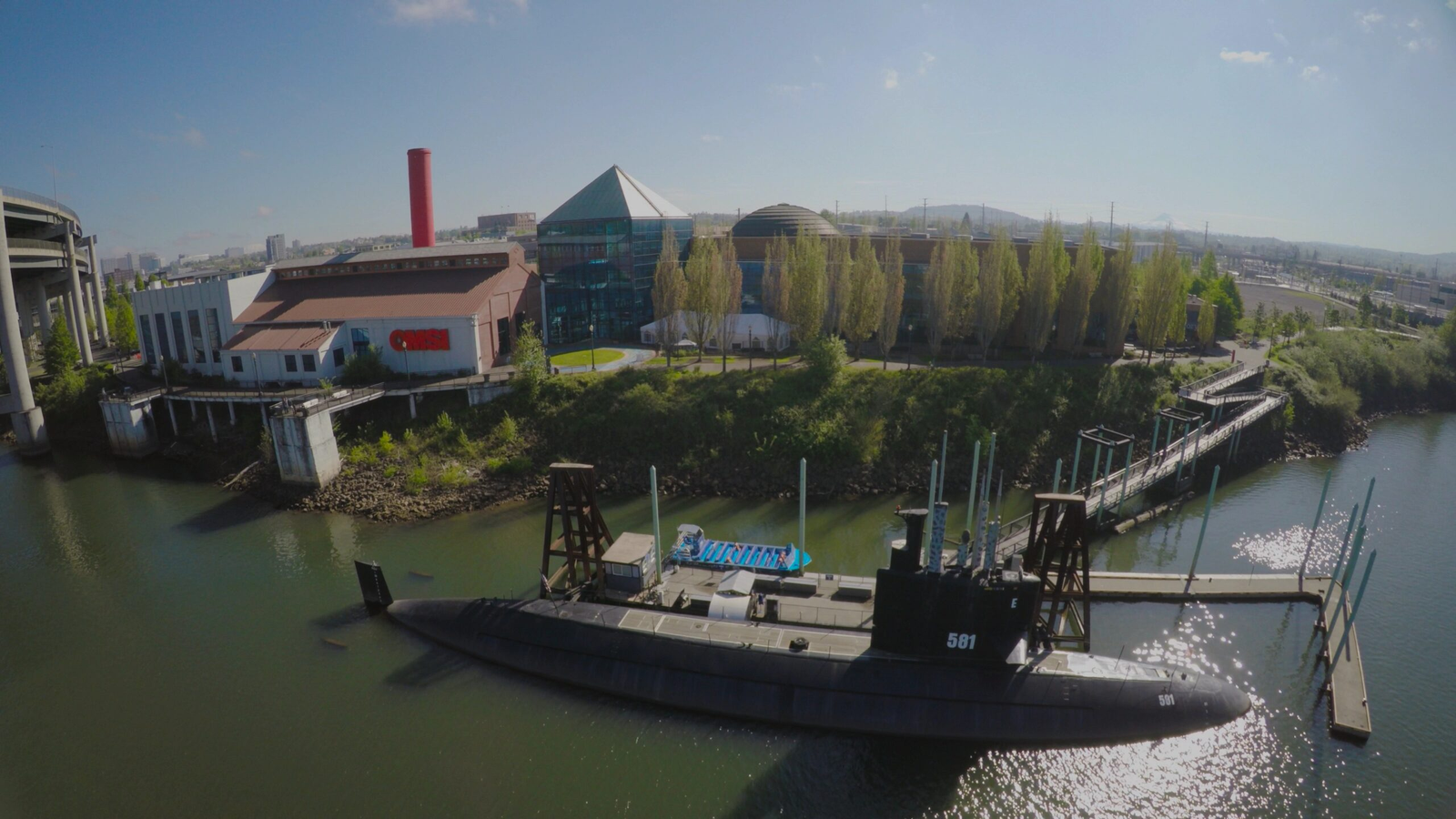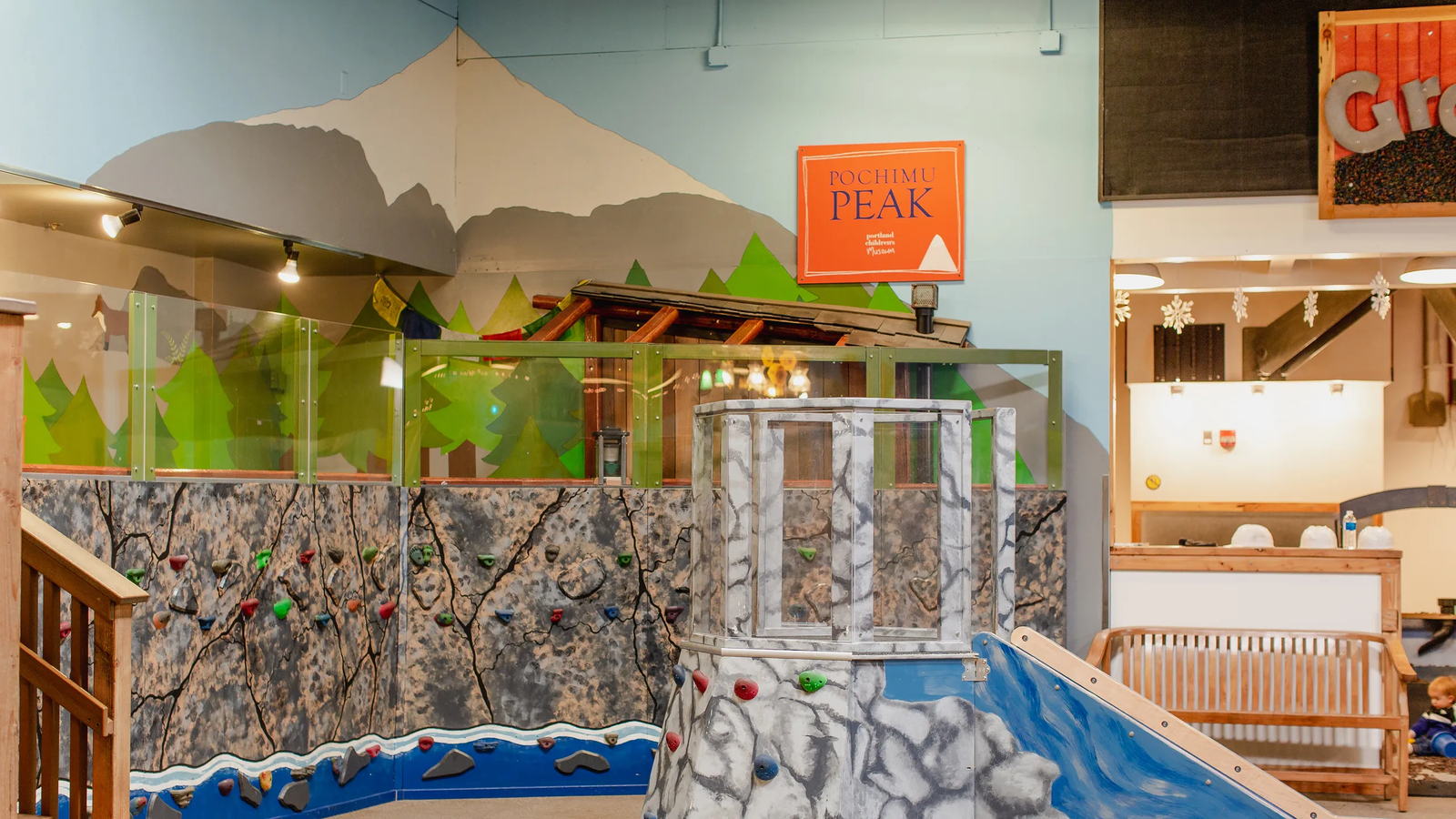Nicknamed “Rose City” for its ideal growing conditions yielding beautiful public gardens, Portland also blossoms as a vibrant travel destination celebrated for thriving food, craft beer and coffee cultures blended into natural splendor. Beyond obvious urban appeals, the City of Roses and surrounding areas engage visitors through dynamic attractions including interactive museums, forested parks, rushing waterfalls and volcanic legacy.
| Attraction | Description |
|---|---|
| International Rose Test Garden | A vast collection of roses overlooking downtown, showcasing over 10,000 bushes of 650 varieties. |
| Portland Japanese Garden | A serene, 5.5-acre garden designed to reflect ancient Japanese aesthetics. |
| Oregon Zoo | A leading zoo focusing on conservation and education, with diverse ecosystems represented. |
| Pittock Mansion | Historic mansion offering panoramic city views and showcasing early 20th-century luxury. |
| Powell’s City of Books | The world’s largest independent bookstore, covering an entire city block. |
| Columbia River Gorge | A scenic area offering waterfalls, hiking trails, and stunning vistas. |
| Portland Art Museum | The oldest art museum in the Pacific Northwest, featuring diverse and global art collections. |
| Oregon Museum of Science and Industry | A science museum with hands-on exhibits and educational programs. |
| Mt Hood Territory | Outdoor adventures around Oregon’s tallest peak, less than 90 minutes from Portland. |
| Portland Children’s Museum | An interactive museum designed for children’s learning and play. |
| Pioneer Square | Downtown’s central square known for its lively atmosphere and historic landmarks. |
| Lan Su Chinese Garden | A tranquil garden in the city center, reflecting Ming Dynasty landscapes. |
Though hip vibes and outdoor adventure often define Portland’s alluring identity nationwide, considerable history and local tradition also claim visitor attention within city limits and the Willamette Valley wine country. These 12 top attractions survey some chief reasons Portland resides atop many travelers’ must-see lists annually as a leading Pacific Northwest vacation spot.
International Rose Test Garden

Name and Location: The International Rose Test Garden is a beloved botanical garden located within Washington Park overlooking downtown Portland, Oregon.
History and Significance: Created in 1917, the International Rose Test Garden serves as an internationally recognized evaluation center displaying nearly 10,000 roses. As the oldest official rose test garden in the United States, new and improved rose varieties are cultivated among the landscape of over 650 rose varieties.
What to Expect: Visitors can stroll through stunning floral displays overflowing with vibrant rose plants during the spring and summer blooming seasons. interpretive signs identify distinct hybrids and types ranging from historic roses to the latest all-America rose selections. The site offers ideal backdrops for photos.
Visitor Information: The International Rose Test Garden is open daily year-round as a free attraction, with peak blooms during May through September. Early morning and evening visits are ideal. Washington Park offers on-site parking areas, maps and walking paths connecting to the Rose Garden.
No Portland introduction would be complete without visiting the city’s living floral symbol spread across five acres overlooking downtown from the West Hills of Washington Park. Home to over 10,000 rose bushes spanning 650 varieties, the International Rose Test Garden dazzles year-round but especially each June when about 550 specimens reach peak bloom. Portland Rose Festival happenings centered around the blooms also ignite seasonal excitement. Wander among fragrant favorites and new hybrid introductions while taking in panoramic views of urban icons like Mount Hood and Portland bridges from this verdant perch.
Portland Japanese Garden

Name and Location: The Portland Japanese Garden is considered the most authentic Japanese garden outside of Japan, located within Washington Park in Portland’s West Hills.
History and Significance: Opened in 1967, the Portland Japanese Garden offers 5 distinct garden spaces on 5.5 meticulously manicured acres designed to feel tranquil and contemplative. One of the largest Japanese gardens outside Japan, it also houses a cultural village, tearoom and learning center focused on integrating Japanese culture with the beauty of nature.
What to Expect: Visitors walk winding gravel paths through specialty gardens featuring stone lanterns, ornamental cherry trees, bonsai specimens, and 11th-century Japanese pagoda architecture all reflected upon the serenity of calm ponds dotted with vibrant koi fish.
Visitor Information: The Portland Japanese Garden is open daily March-November, with reduced winter season hours. Timed tickets with entry windows must be reserved in advance online. An on-site gift shop and café are also available.
Deeper into Washington Park’s woods, the Portland Japanese Garden transports visitors across hemispheres over 5.5 serene acres designed to model iconic ancient sites like Kyoto’s Ryoan-ji. Meticulous artisanship devoted to structures, bridges, plantings and placements within the landscape intends to inspire personal harmony and joy while reflecting Japanese aesthetic ideals found in nature. Strolling the peaceful paths dotted with maple and cherry trees that ignite in vibrant fall colors makes it easy to forget you’re minutes from a major American city while lost in this authentic haven.
Oregon Zoo

Name and Location: The Oregon Zoo is located just west of downtown Portland, situated on 64 acres within family-friendly Washington Park.
History and Significance: Founded in 1888 with origins as a circus menagerie, the Oregon Zoo is one of the oldest zoos in the United States. Today the state’s flagship animal attraction is globally acclaimed for its natural habitat environments focusing on animal conservation, education and breeding endangered species. Popular residents include elephants, great apes and California condors.
What to Expect: Visitors can observe hundreds of animals from elephants to red pandas roaming lush, expansive habitats as one of the top rated zoos in the country. Seasonal baby animals, feeding times, train rides, zip lining, concerts and educational programs make it an engaging day out.
Visitor Information: The Oregon Zoo is open daily all year, with seasonal hours that extend during summer months. Ticket booking online is recommended as entry times often sell out, especially on holidays or weekends during peak visiting periods. Parking passes should also be reserved.
Consistently ranked among America’s top five zoos, the Oregon Zoo blends global conservation priorities with immersive educational experiences focused on the Pacific Northwest’s diverse ecosystems. Newer exhibit spaces like the Penguin Filtration swim-through tank, Polar Passage for cold climate animals with underwater viewing and Elephant Lands habitat demonstrate leading enclosure design focused on animal welfare. Native Northwest species like cougar, black bears, sea otters and pythons receive special showcase alongside endangered species recovery breeding programs protecting California condors, African elephants and other fragile creatures dependent on zoos.
Pittock Mansion
Name and Location: The Pittock Mansion is an elegant historic estate located within a 46-acre park situated above downtown Portland, Oregon in the trendy northwest district.
History and Significance: Constructed in 1914 as the residence of Oregon pioneer family Henry Pittock and his wife Georgiana, Pittock Mansion estate is a landmark property honoring early 20th century culture. Architecture draws from English and French inspirations using fine materials and craftsmanship as a grand West Coast mansion.
What to Expect: Guided tours allow visitors to explore the basement-to-attic splendor room by room as volunteers share stories about the Pittocks’ contributions to Portland’s development. The grounds also provide sweeping scenic views above the city skyline and surrounding hills. A gift shop and café are located on-site.
Visitor Information: Pittock Mansion is open for public touring most days year-round, with extended seasonal hours during spring and summer. Advanced reservations are recommended due to popularity. The mansion can also be privately rented for events. Parking is free.
This grand historic French Renaissance chateau crowning the highest West Hills sums Portland more lavishly than any other attraction with its jaw dropping city to mountain views. Oregon pioneer family scion Henry Pittock spared no expense turning his 1914 dream house into an architectural gem revealing extreme wealth concentration of the era through elaborate imported furnishings, exotic woods, intricate glasswork and fine artisan details across 22 rooms. Self-guided audio tours and Pittock’s fascinating rags-to-riches biography fascinate visitors through the otherwise modest man’s conspicuous symbols of prestige and power from a lofty perch.
Powell’s City of Books

Name and Location: Powell’s City of Books is an iconic independent bookstore located in downtown Portland, Oregon occupying an entire city block.
History and Significance: Opened in 1971, Powell’s City of Books holds the prestigious title of world’s largest independent bookstore. Stocking over 1 million new and used books across 3,500 sections, the mega-bookstore serves as a beloved literary hub hosting author events almost daily. Its multi-levelspace spans over 68,000 square feet.
What to Expect: Visitors can get lost wandering aisles of fiction, travel, rare books and more as one of America’s top attractions for bibliophiles. Inspirational phrase adorn walls, stacks reach to ceilings, and handwritten staff picks guide intriguing reads. A coffee shop and rare book rooms add to experience.
Visitor Information: Powell’s City Books is open daily with extended hours, including all major holidays except Thanksgiving and Christmas Day. Parking access is limited in busy downtown, so transit options are recommended. Powell’s also operates smaller neighborhood stores in Portland.
The self-proclaimed largest new and used independent bookstore in the world occupies a full Portland block spread over multiple color coded rooms, earning lore among global bibliophiles. Local institution Powell’s sweetens its endless book browse temptation through author events, writing workshops, story times, book clubs and more literary engagement annually delighting over a million walk-in customers. Whether you seek obscure university press offerings, small press poetry collections, foreign language titles, regional book picks or mainstream bestsellers, no other shop indulges obsession like Powell’s massively stocked shelves.
Columbia River Gorge

Name and Location: The Columbia River Gorge refers to a spectacular river canyon cutting through the Cascade Mountain range, located between Oregon and Washington states.
History and Significance: Shaped over millions of years by volcanic activity and massive flooding, the Columbia River Gorge stretches over 80 miles with unique geological features. Dramatic cliffs, forests, wildflowers, waterfalls and mountain vistas make it one of the most iconic natural landmarks in the Pacific Northwest.
What to Expect: Visitors often drive, hike or bike through the Columbia River Gorge while stopping at highlights like the 620-feet-high Multnomah Falls waterfall. Nearby attractions include the interpretive Columbia Gorge Discovery Center, Sternwheeler boat cruises, Skamania Lodge, and the iconic Vista House lookout.
Visitor Information: As a vast scenic region encompassing two states, the Columbia River Gorge offers endless recreational access points and trip routes based on interests and ability levels. Stop at Gateway Visitor Centers for trip-planning advice. Permits required for parking access some trailheads.
While the Columbia River Gorge straddles the Oregon-Washington border carved dramatically through the Cascade Mountain Range, Portlanders benefit from the convenient day trip access eastward to revel in plummeting waterfalls, striking panoramas from steep cliffs and adventurous pursuits including hiking trails and white water rafting. Don’t miss going eye-to-eye with tumbling Multnomah Falls, one of the highest in North America. The historic 1926 Lodge invites guests to linger longer over regional cuisine or browse locally made crafts after taking in the awe-inspiring natural spectacle.
Portland Art Museum

Name and Location: Portland Art Museum comprises a group of landmark buildings showcasing fine arts in the heart of downtown Portland’s Cultural District.
History and Significance: Founded in 1892, the Portland Museum of Art formed from Portland’s earliest civic cultural institutions and private collections. Today it houses more than 42,000 objects spanning ancient artifacts to modern contemporary works. As the oldest art museum on the West Coast, the institution plays a vital role in arts education in the region.
What to Expect: Visitors can explore an extensive fine arts collection across mediums – from Native American carvings and Ming dynasty paintings to ImpressionistEuropean works, American folk art, English silver, and modern installations. Sculpture Court and Object Study Gallery are popular spaces.
Visitor Information: Portland Art Museum is open Tuesdays–Sundays year-round. Special exhibitions require separate ticket purchases. The site includes a museum store, café, auditorium, and rentable event spaces. Several parking garage options are nearby.
Founded in 1892, the immense Portland Art Museum holds special distinction today as the oldest art museum west of the Mississippi representing diverse creators and global cultures. Alongside the substantial permanent collection spanning classical antiquity to contemporary mediums are continuously rotating major exhibits like 2022’s large-scale Vincent Van Gogh immersive show. Augmenting the main downtown campus, the museum also operates the Northwest Film Center and two architecturally significant satellite galleries—Jubitz Center for Modern and Contemporary Art and the Mason Ehrman Residence showcasing regional arts.
Oregon Museum of Science and Industry

Name and Location: Oregon Museum of Science and Industry (OMSI) is a world-class science center located along the eastbank of the Willamette River in the Hosford-Abernethy neighborhood of southeast Portland.
History and Significance: Founded in 1944 and rebuilt multiple times through the decades, OMSI provides innovative and accessible science learning experiences to foster lifelong curiosity and wonder. As one of the top U.S. science museums, the 220,000 sq ft facility features more than 200 participatory exhibits relating to natural sciences, technology, and the region.
What to Expect: Guests can interact with 5 enormous exhibit halls focusing on earth science, life science, chemistry, physics/engineering, innovation and the human body. A retired submarine, planetarium shows, and an Omnimax theater add experiences. The site also encompasses outdoor science playgrounds, seasonal camps and a café.
Visitor Information: OMSI operates regular hours year-round, closing only Thanksgiving and Christmas days annually. Advance ticket purchases are suggested, especially for premium experiences like planetarium shows or featured exhibits. Parking is available in a pay lot adjacent the museum.
Beloved as one of America’s foremost science museums blending education with entertainment especially for younger minds, OMSI offers hands-on permanent exhibits focused on regional science and technology plus revolving touring shows and Omnimax theater presentations. Favorite interactive permanent galleries include Physics Lab demonstrating principles of motion, light and more through engaging experiments as well as Life Science housing botanical, cellular biology and veterinary medicine displays with resident animal ambassadors. For many Portland families, OMSI provides the most habit forming attraction to inspire scientific curiosity for future generations through formative fun.
Mt Hood Territory

Name and Location: Mt Hood Territory refers to a scenic mountain region surrounding Oregon’s highest peak, Mt Hood, located about 60 miles east of Portland.
History and Significance: Rising prominently above the Cascade Range to elevations over 11,000 ft, the iconic stratovolcano known as Mt Hood holds a storied place in Oregon’s landscape, climate, Native American lore, and pioneer heritage. Its slopes contain 8 ski resorts, over 1,800 lakes, mountain villages, and vast wilderness with outstanding climbing and recreation.
What to Expect: Visitors travel Mt Hood Territory to ascend or sightsee at Mt Hood’s summit, relax at mountainside resorts, ski its legendary vertical terrain, sail/fish on high alpine lakes, or hike through temperate rainforests lined with wildflower meadows and waterfalls all framed by Mt Hood’s unforgettable views.
Visitor Information: Mt Hood Territory encompasses several small mountain towns full of outfitters, guides, lodging, restaurants and adventure sport facilities catering to tourists. Peak seasons are June-September for warm weather activities, and November-April for skiing/riding. Some venues close in spring/fall shoulder seasons.
Though technically beyond Portland city limits, the looming grandeur of Oregon’s tallest peak commands attraction from everywhere its snowcapped beauty appears on clear days. Less than 90 minutes from downtown, Mt Hood Territory encompasses adventure options from seesawing timberline trails and mountain biking courses to year-round ski resorts. Families enjoy lost lake swimming holes in summer and winter sledding hills almost equally. Local restaurants, breweries and cafes scattered across small surrounding mountain towns like Government Camp and Rhododendron serve familiar fuels to keep your engines revving in the high alpine air.
Portland Children’s Museum

Name and Location: The Portland Children’s Museum is an interactive kids’ museum situated along the Willamette River waterfront in downtown Portland.
History and Significance: Founded in 1975 as a grassroots play space, the Portland Children’s Museum focuses on inspiring learning, creativity and culture for young minds through thoughtful exhibits aligning with early childhood development models. Designed expressly for children 10 years and under, the museum prioritizes experiential learning.
What to Expect: Kids engage with a series of hands-on educational exhibits like an art studio, construction zone, science lab, world culture displays, and outdoor playgrounds. The museum also hosts cultural festivals, educational programs, story times, and seasonal camps. A family resource center helps parents and caregivers connect.
Visitor Information: The Portland Children’s Museum operates regular hours Tuesday-Sunday, with morning or evening-only schedules varying day to day and seasonally. Advance ticket purchases are strongly recommended to guarantee entry, which can sell out weeks in advance.
Recent expansions and exhibit upgrades further solidify the Portland Children Museum’s beloved niche catering to the most influential demographic around through nearly three stories of sensory stimulation fused with early learning concepts. Toddlers strengthen motor skills negotiating challenging structures in Outdoor Adventure while elementary minds craft experiments in Water Works, perform on stage inside Center Stage, and role play adult careers throughout the skills exhibits. Parents love the Saturday evening mixers serving local wines and beers to unwind while the kids channel energy into dance parties or art projects until close.
Pioneer Square

Name and Location: Pioneer Square refers to a scenic downtown plaza located in the heart of Portland, surrounded by museums, hotels, transit stations, and landmarks within the city’s bustling core.
History and Significance: Dedicated in 1984 along the Portland Transit Mall, Pioneer Square serves as “Portland’s living room” – a vibrant community gathering place honoring city history. At one acre, the brick-paved square contains symbols commemorating settlers, a fountain, and open event lawn frequently activated by festivals, protests, entertainment, and everyday leisure in the center of the city.
What to Expect: Visitors pass through Pioneer Square enroute walking downtown Portland, often stopping to photograph bronze statuary like “The Promised Land” sculpture commemorating pioneer families. Rotating public art displays, a seasonal holiday tree, and adjacent classical buildings like Pioneer Courthouse frame the area with old Portland charm.
Visitor Information: Pioneer Square operates as a 24-hour public plaza open daily offering free pedestrian access. Located along the MAX Light Rail and Portland Streetcar lines, it serves as a transit hub. Large events may close surrounding sidewalks/streets temporarily. Guided tours also stop in the square.
Though many attractions orbit Portland’s central downtown square, the leafy brick-lined public space itself delivers worthwhile stop for people watching, food cart grazing and admiring historical architecture all around. Bookending the park, you’ll spot the stately 1888 Pioneer Courthouse and the striking Pioneer Place modern shopping mall with its ornate glass rotunda and sky bridge. Under the Square’s central flagpole surrounded by four bronze statues honoring Oregon settlers, over 150 years of citizens have gathered for civic events emblematic of the city’s cultural soul.
Lan Su Chinese Garden

Name and Location: Lan Su Chinese Garden is an authentic classical Chinese garden occupying a full city block in downtown Portland’s Old Town Chinatown district.
History and Significance: Constructed by over 60 artisans from Portland’s sister city Suzhou, China, Lan Su Chinese Garden opened in 2000 as a tranquil escape honoring Chinese history and design aesthetics. One of Portland’s top cultural attractions, the garden is among the largest of its kind outside China.
What to Expect: Visitors wander through spaces with symbolic structures, bonsai trees, and interconnecting walkways surrounding peaceful lakes filled with ornamental fish. Halls house traditional Chinese art displays. The garden’s tea house offers tasting experiences explaining Asian tea cultures.
Visitor Information: Lan Su Chinese Garden requires timed ticket entry purchased in advance online. The site operates seasonal hours March-November, with reduced winter availability. Guided tours should also be booked ahead when available. An on-site gift shop contains Asian cultural items.
Meticulous artisans crafted Portland’s Lan Su Chinese Garden to transport visitors across the Pacific into graceful Ming Dynasty China over an entire interior city block. Designed according to Taoist harmonic principles, the garden’s pond, limestone formations, curved walkways, and waterfalls around every corner intend peacefulness and contemplation balanced by ornate pavilions and scholar’s courtyards. Caring horticulture nurtures classical Chinese plants, though the garden’s integral symbol remains towering gingko trees representing unity and harmony. Authentic music, snack and tea experiences further enhance the immersion when not distracted by skyscrapers framing tranquil pockets of this precious cultural oasis downtown.





Join the Conversation